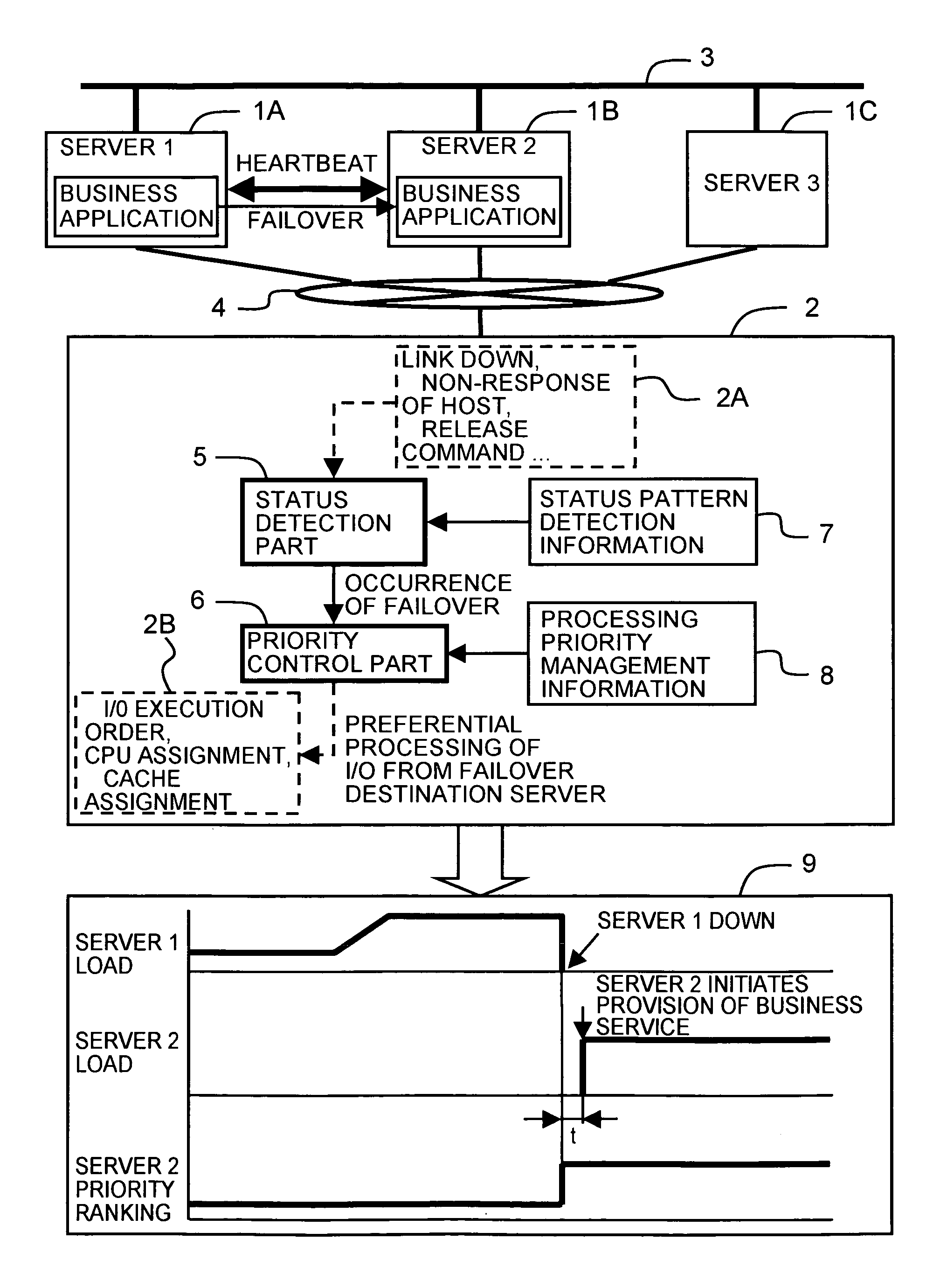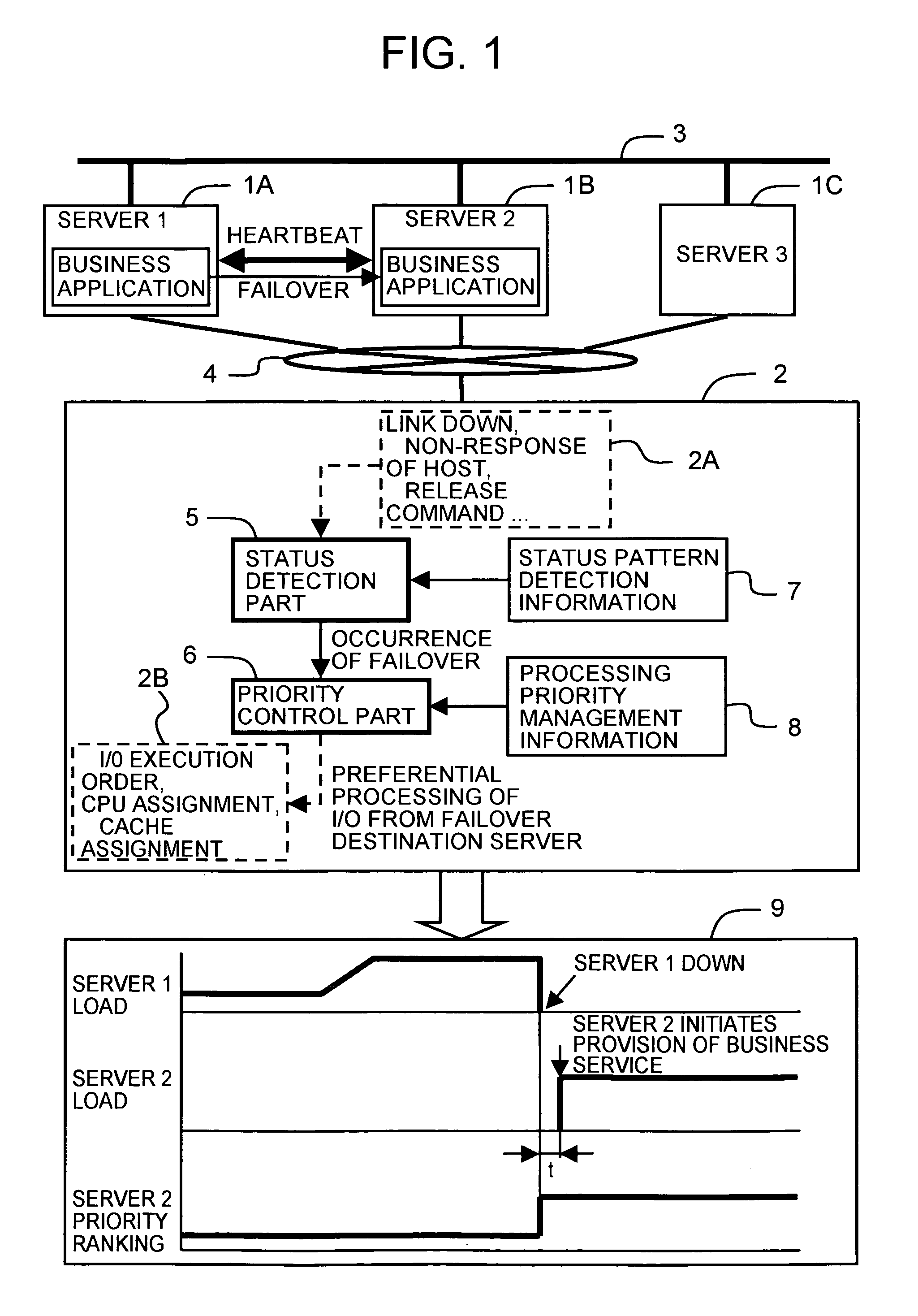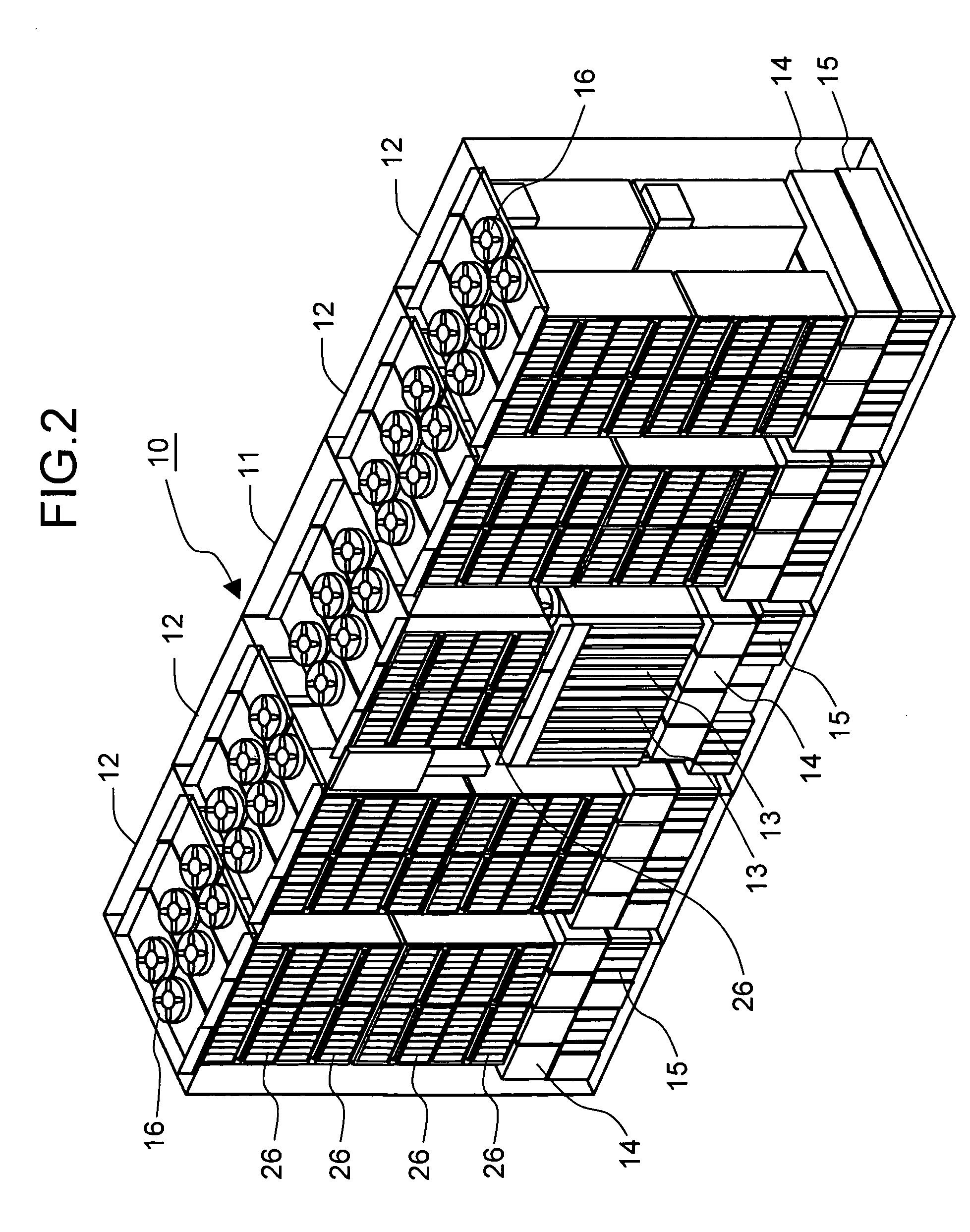Storage device for monitoring the status of host devices and dynamically controlling priorities of the host devices based on the status
a storage device and host device technology, applied in data conversion, redundant hardware error correction, instruments, etc., can solve the problems of inability to shorten the failover time, consideration given to shortening the time on the storage device side, and only on the server sid
- Summary
- Abstract
- Description
- Claims
- Application Information
AI Technical Summary
Benefits of technology
Problems solved by technology
Method used
Image
Examples
first embodiment
1. First Embodiment
[0055]FIG. 2 is a schematic perspective view which shows the external appearance and construction of a storage device 10. For example, this storage device 10 can be constructed from a basic housing 11 and a plurality of additional housings 12.
[0056]The basic housing 11 is the minimum constituent unit of the storage device 10, and has both a memory function and a control function. The additional housing 12 are options for the storage device 10, and are controlled by the control function of the basic housing 11. For example, a maximum of four additional housing 12 can be connected to the basic housing 11.
[0057]A plurality of control packages 13, a plurality of power supply units 14, a plurality of battery units 15 and a plurality of disk drives 26 are respectively disposed in a detachable manner in the basic housing 11. A plurality of disk drives 26, a plurality of power supply units 14 and a plurality of battery units 15 are respectively disposed in a detachable ma...
second embodiment
2. Second Embodiment
[0152]A second embodiment will be described with reference to FIGS. 15 and 16. This embodiment has the status of a modification of the first embodiment. The characterizing feature of the present embodiment is that even in cases where a status (operating pattern) that is not registered in the management table is detected, the quantity of input-output requests from the servers and the like are taken into account, and the priority rankings are varies in steps.
[0153]In the present embodiment, a case is indicated in which the operating pattern PB1 is detected under conditions in which this operating pattern PB1 is not registered in the cluster management table TA2. At time T41, the business application 111 of the server 110 is stopped in a planned stop (S81). The server 110 releases the exclusive use of the shared logical devices 261 by issuing a release command (S82).
[0154]When the storage device 200 receives the release command from the server 110 (S83), the storage...
third embodiment
3. Third Embodiment
[0166]A third embodiment will be described with reference to FIGS. 17 through 20. This embodiment has the status of a modification of the first embodiment. The characterizing feature of this embodiment is that the priority rankings are dynamically altered in accordance with the load states of the respective servers and the operating patterns at the time that failover occurs.
[0167]FIG. 17 is a block diagram which shows an overall outline of the storage system. The failover detection part 221 of the present embodiment not only detects failover within the failover cluster, but also detects whether or not the respective servers 110 through 140 are in an overload state. The management table 243 comprises substantially the same construction as the management table 242. However, as is shown in FIG. 18, flags which indicate whether or not the priority ranking during overload and the overload state are currently being handled are included in the server management table TA1...
PUM
 Login to View More
Login to View More Abstract
Description
Claims
Application Information
 Login to View More
Login to View More - R&D
- Intellectual Property
- Life Sciences
- Materials
- Tech Scout
- Unparalleled Data Quality
- Higher Quality Content
- 60% Fewer Hallucinations
Browse by: Latest US Patents, China's latest patents, Technical Efficacy Thesaurus, Application Domain, Technology Topic, Popular Technical Reports.
© 2025 PatSnap. All rights reserved.Legal|Privacy policy|Modern Slavery Act Transparency Statement|Sitemap|About US| Contact US: help@patsnap.com



